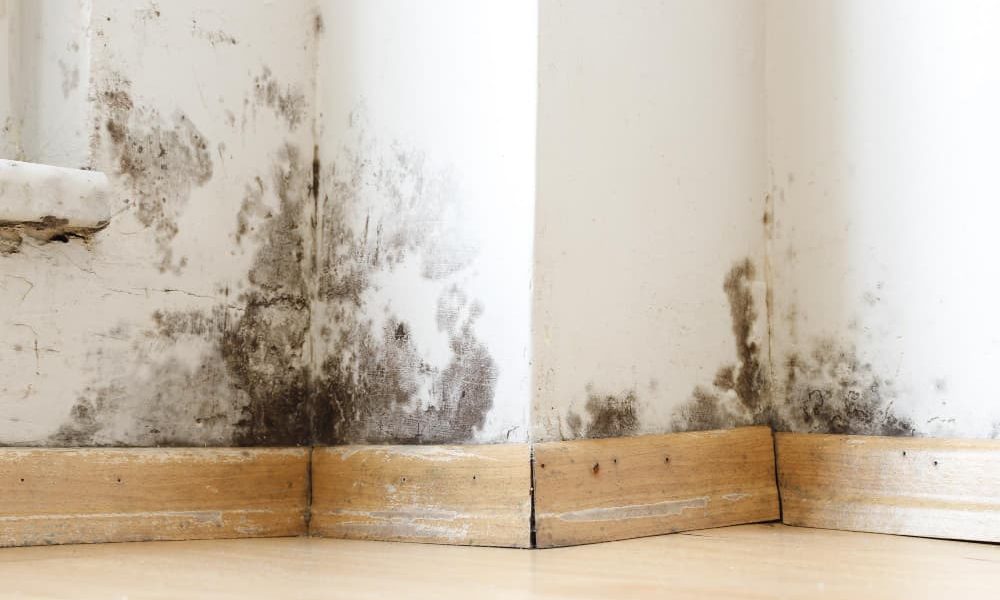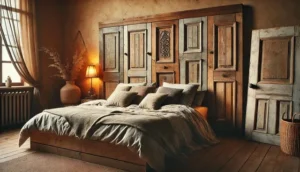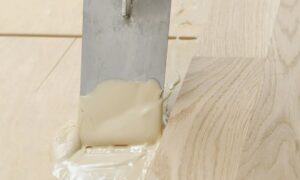In recent years, sustainability has taken center stage in both home and garden design. One of the simplest and most creative ways to embrace this trend is by repurposing wooden pallets to create beautiful, functional garden furniture. This guide will walk you through everything you need to know, from selecting the right pallets to preparing them for outdoor use. Let’s dive into the first two crucial steps to get started on your DIY garden furniture project.
1. Introduction to Upcycled Wooden Pallets for Garden Furniture
Wooden pallets, once used primarily for transporting goods, have found a second life in DIY projects, particularly for creating furniture. The idea of upcycling, or repurposing materials, has gained popularity among eco-conscious homeowners and DIY enthusiasts alike. But why are wooden pallets so ideal for making garden furniture?
First and foremost, wooden pallets are readily available and often free. Many businesses are happy to give them away, as pallets can quickly accumulate in warehouses and storage spaces. By using pallets, you can save on material costs and contribute to reducing waste, making it a win-win for both your wallet and the environment.
Another reason why pallets are so popular for garden furniture is their durability. Designed to carry heavy loads, these pallets are made from strong, often untreated wood, capable of withstanding outdoor elements when properly treated. With a bit of creativity and some basic tools, you can transform these seemingly ordinary wooden structures into beautiful, custom garden furniture that complements your outdoor space.
Upcycling pallets also gives you the freedom to create unique, one-of-a-kind pieces. From rustic benches and coffee tables to loungers and planters, the possibilities are endless. Whether you’re aiming for a modern, industrial aesthetic or a more natural, rustic look, pallet furniture can be customized to fit your style.
Lastly, using upcycled materials like wooden pallets aligns with a growing trend toward sustainable living. By giving new life to old materials, you not only reduce your environmental impact but also create meaningful, handmade furniture that tells a story. This approach to home and garden design resonates with those who value craftsmanship and environmentally responsible choices.
Why Choose Wooden Pallets for Garden Furniture?
So, why exactly should you choose wooden pallets for your garden furniture project? Here are a few key reasons:
- Cost-effective: Wooden pallets are either free or very affordable, especially when compared to the cost of brand-new furniture.
- Durable: Pallets are built to be strong and sturdy, making them an excellent base for outdoor furniture that needs to withstand the elements.
- Customizable: Wooden pallets offer endless design possibilities. You can modify the size, shape, and look of your furniture to suit your specific needs and preferences.
- Eco-friendly: Upcycling pallets reduces waste and promotes sustainability. You’re not only saving money but also contributing to a greener planet.
- Aesthetic appeal: The natural, weathered look of wooden pallets can add a charming, rustic feel to your garden, creating a space that feels cozy and inviting.
With these benefits in mind, let’s move on to the next crucial step in your pallet furniture journey: selecting the right pallets.
2. How to Select the Best Wooden Pallets for Garden Furniture
Before you get started on your project, it’s important to know that not all wooden pallets are created equal. Choosing the right pallets for your garden furniture is critical to ensure both safety and longevity. Here’s a comprehensive guide to help you find the best pallets for your DIY garden furniture.
Where to Find Wooden Pallets for Garden Furniture Projects
You’ll likely encounter wooden pallets in a variety of places. Many businesses, such as warehouses, garden centers, supermarkets, and hardware stores, receive regular shipments on pallets and are often happy to give them away for free. Some companies even have designated areas where they leave unwanted pallets for collection.
If you don’t have luck finding free pallets, you can check online marketplaces like Craigslist, Facebook Marketplace, or local classified ads. Some people sell pallets for a small fee, but you may still come across free listings. It’s also a good idea to ask around at local businesses or community groups to see if anyone has spare pallets they’re looking to get rid of.
How to Check if Pallets are Safe and Suitable for Furniture
Not all pallets are suitable for furniture projects, especially those destined for outdoor use. Here’s what you need to know:
- Look for Stamps and Labels: Many pallets are stamped with specific codes or labels that indicate whether they’ve been chemically treated or heat-treated. Look for the letters “HT” (heat-treated) on the stamp, as these pallets are safe to use. Avoid pallets marked with “MB,” which indicates they’ve been treated with methyl bromide, a toxic chemical.
- Inspect for Damage: Before taking a pallet home, check it thoroughly for any signs of damage, such as broken or cracked boards, loose nails, or rot. Damaged pallets may be unsafe to use, especially if they’ll be supporting weight in a piece of furniture.
- Avoid Contaminated Pallets: Some pallets may have been used to transport hazardous materials or chemicals. Always inspect pallets for any stains, spills, or strong odors, as these could indicate contamination. It’s best to avoid any pallets with questionable origins or appearances.
Factors to Consider When Selecting Pallets
Once you’ve found a source of pallets, there are a few additional factors to consider when selecting the best ones for your project:
- Size and Shape: Pallets come in various sizes and shapes, so consider what works best for your project. Standard pallets are usually 48 inches by 40 inches, but you may find other dimensions depending on the source.
- Wood Type: Most pallets are made from either hardwood or softwood. Hardwood pallets, such as oak or maple, are more durable but heavier to work with. Softwood pallets, such as pine, are lighter and easier to cut but may not be as long-lasting.
- Condition: Choose pallets that are in good condition, with minimal wear and tear. The better the condition of the pallet, the less work you’ll need to do to prepare it for your project.
By carefully selecting your wooden pallets, you’ll ensure that your garden furniture is not only beautiful but also safe and long-lasting. Once you’ve sourced the best pallets, it’s time to move on to preparing them for your project—a process we’ll cover in the next section.
3. Step-by-Step Guide: Preparing Wooden Pallets for Garden Furniture
Once you’ve selected the best wooden pallets for your project, it’s time to prepare them for use. Proper preparation is key to ensuring your furniture will be safe, sturdy, and long-lasting, especially when exposed to outdoor elements. In this section, we’ll walk through the essential steps for preparing your pallets before construction.
Tools and Materials Needed for Working with Pallets
Before starting, gather the necessary tools and materials. The tools you’ll need can vary depending on the complexity of your project, but here are some essentials:
- Hammer or crowbar: To remove nails from the pallets.
- Sander or sandpaper (80-120 grit): For smoothing the rough surface of the pallets.
- Saw (hand saw or electric saw): To cut the pallets down to size.
- Drill and screws: For securing the pallets together.
- Wood stain, paint, or sealant: To protect the wood and enhance its appearance.
You’ll also want safety gear, such as gloves, safety goggles, and a dust mask, to protect yourself during the sanding and cutting processes.
How to Clean, Sand, and Treat Pallets for Outdoor Use
Once you have your tools ready, follow these steps to prepare your pallets:
- Clean the pallets: Start by scrubbing the pallets with a stiff brush and soapy water to remove dirt, dust, and any potential contaminants. If the pallets have been exposed to outdoor elements or chemicals, it’s crucial to clean them thoroughly. Let the pallets dry completely before proceeding to the next step.
- Sand the surface: Wooden pallets often have rough surfaces with splinters, which can be uncomfortable for seating or dangerous to handle. Use a power sander or sandpaper to smooth the surface, focusing on any rough spots, edges, or protruding nails. This will give the wood a more finished look and make it safer to handle.
- Remove unwanted nails and splinters: Use a hammer or crowbar to remove any loose nails from the pallets. Be sure to check for sharp edges or protruding nails that could cause injuries, and sand them down if necessary.
- Cut to size (if necessary): Depending on your project, you may need to cut the pallets to specific dimensions. Measure and mark the pallets before cutting to ensure accurate sizing. A handsaw or circular saw works well for this.
- Treat the wood for outdoor use: To ensure your furniture can withstand the elements, apply a wood treatment. If you prefer a natural, rustic look, consider applying a clear wood sealant to protect the pallets from moisture and UV rays. Alternatively, you can use a stain or paint to give your furniture a more polished or colorful appearance. Be sure to choose outdoor-grade finishes to prevent damage from weather exposure.
By thoroughly cleaning, sanding, and treating your pallets, you’ll set the foundation for sturdy, comfortable garden furniture that can endure the elements.
Safety Tips When Handling and Cutting Wooden Pallets
Working with wooden pallets involves using sharp tools and dealing with rough materials. Here are some key safety tips to keep in mind:
- Wear protective gear: Always wear gloves, safety goggles, and a dust mask when working with pallets. This will protect you from splinters, dust, and flying debris.
- Use tools carefully: Follow safety guidelines for power tools, such as keeping your fingers away from cutting blades and using clamps to secure the pallets while cutting.
- Check for structural integrity: Before using a pallet, ensure it’s in good condition and free of rot or structural weaknesses. Avoid using pallets that appear damaged or unsafe.
4. DIY Wooden Pallet Furniture Ideas for Your Garden
With your pallets prepped and ready, it’s time to get creative! The versatility of wooden pallets allows you to build a wide range of garden furniture. Whether you’re a seasoned DIY enthusiast or a beginner, here are a few easy project ideas to inspire you.
Easy Garden Furniture Projects Using Wooden Pallets
- Pallet Garden Bench or Sofa: One of the most popular uses for pallets is creating garden seating. For a simple bench, stack two or three pallets on top of each other to create the base, and use additional pallets or cut boards to form the backrest. Attach the pieces using screws, then sand and finish as needed. For extra comfort, add outdoor cushions or pillows.
- Pallet Coffee Table or Side Table: A pallet coffee table is a great addition to your outdoor seating area. You can leave the pallet whole for a larger table or cut it down to size for a smaller side table. Add caster wheels to the bottom for easy mobility, and finish with a coat of paint or stain to protect it from the elements.
- Pallet Planters: Wooden pallets can also be transformed into vertical or horizontal planters. You can remove some of the slats and attach small pots or boxes to create an eye-catching vertical garden. Alternatively, use the pallet as a base for a raised garden bed, filling it with soil and plants.
These projects require minimal tools and can be completed in a weekend. Plus, they offer a practical and stylish way to enhance your garden space.
How to Make a Pallet Garden Bench or Sofa
Building a pallet bench or sofa is a straightforward project that adds a cozy seating area to your garden. Here’s a basic guide:
- Materials needed: Wooden pallets (at least 4-5), screws, wood glue, outdoor cushions (optional).
- Instructions: Stack two pallets to create the base and secure them together using screws. For the backrest, attach an additional pallet or individual boards at an angle for support. Sand down the edges and finish the wood with outdoor sealant. For added comfort, place cushions or throw pillows on the seat.
Building a Pallet Coffee Table or Side Table
A pallet coffee table adds a rustic yet functional touch to any garden. Here’s how to make one:
- Materials needed: One wooden pallet, four caster wheels, screws, wood stain or paint.
- Instructions: Sand the pallet and apply a coat of wood stain or paint for protection. Attach the caster wheels to the bottom of the pallet for mobility. If desired, add a glass or wooden top for a smooth surface. You now have a stylish and functional coffee table for your outdoor space.
5. How to Protect Wooden Pallet Furniture from Outdoor Elements
Once your pallet furniture is complete, you’ll want to ensure it stands the test of time. Outdoor furniture is exposed to various weather conditions, so it’s important to protect it to prolong its life. Here are some tips for keeping your furniture in top shape.
Tips for Weatherproofing Garden Furniture Made from Pallets
- Use a high-quality outdoor wood sealant: After building your furniture, apply a water-resistant sealant to prevent moisture from seeping into the wood. This will help protect against rain and humidity.
- Cover during harsh weather: When not in use, cover your pallet furniture with waterproof tarps or furniture covers to shield it from heavy rain, snow, or intense sunlight.
- Elevate furniture off the ground: If possible, place your pallet furniture on a patio or deck to prevent prolonged exposure to wet ground, which can cause rot over time.
How to Apply Wood Stain or Sealant for Outdoor Use
Applying a protective finish is crucial for the longevity of your pallet furniture. Here’s how to do it:
- Choose the right product: Select a wood stain or sealant designed for outdoor use. Look for products labeled “weather-resistant” or “waterproof.”
- Prepare the surface: Make sure the wood is clean and dry before applying the sealant. Use a brush to apply an even coat, following the wood grain.
- Allow drying time: Let the sealant dry completely before using the furniture. Depending on the product, you may need to apply multiple coats for maximum protection.
By following these steps, you can ensure your pallet furniture remains sturdy and beautiful for years to come.
Best Practices for Maintaining and Preserving Pallet Furniture
Even after you’ve weatherproofed your pallet furniture, routine maintenance is key to keeping it in good condition:
- Clean regularly: Remove dirt and debris by wiping down your furniture with a damp cloth. Avoid using harsh chemicals that can strip the protective finish.
- Inspect for damage: Periodically check for signs of wear, such as cracks, rot, or loose screws. Address any issues promptly to prevent further damage.
- Reapply sealant when necessary: Over time, the protective sealant may wear off due to exposure. Reapply a fresh coat every year or two to maintain durability.
By taking these preventive measures, your pallet garden furniture can remain a stylish and functional addition to your outdoor space for years to come.
6. Creative Pallet Garden Furniture Designs to Inspire You
Now that you’ve learned how to build basic pieces of garden furniture using upcycled wooden pallets, it’s time to explore the more creative possibilities. Pallet furniture offers endless design flexibility, allowing you to experiment with different styles, colors, and configurations. In this section, we’ll look at some inspiring ideas that can help you turn ordinary pallets into extraordinary outdoor furniture.
How to Design Unique Outdoor Furniture Using Upcycled Pallets
When designing your outdoor furniture, think beyond the basics. Pallets can be transformed into multifunctional, stylish pieces that suit your aesthetic preferences. Here are a few tips to guide your design process:
- Mix and match materials: Combine wooden pallets with other materials such as metal or glass. For example, a pallet coffee table can be topped with glass for a sleek finish, while metal legs or accents can add an industrial touch to pallet chairs or loungers.
- Play with colors and finishes: You can customize your furniture with paint, wood stain, or even decals. Bright, bold colors can create a fun, lively vibe, while natural wood finishes give off a rustic, organic look. Outdoor-friendly paints and stains are perfect for protecting the wood while adding a personal touch.
- Think about function: When designing your furniture, consider how it will be used. Is it just for seating, or would you like to add storage functionality? Pallet benches with storage compartments or a coffee table with built-in shelving can maximize both function and style.
- Create modular furniture: Pallets are great for modular furniture designs. Build pieces that can be rearranged, such as sectional seating or modular tables, allowing you to adapt your outdoor space for various occasions.
- Blend furniture with nature: To achieve a seamless connection between your garden and the furniture, incorporate greenery directly into the design. You can create pallet planters as part of a bench or coffee table, giving your outdoor furniture a unique, nature-inspired feel.
Customizing Pallet Furniture with Cushions, Paint, and Finishes
Once you’ve built the foundation of your pallet furniture, you can take it to the next level by adding customized touches. Here are some ideas:
- Outdoor cushions and upholstery: Adding cushions or upholstered seating pads will not only make your furniture more comfortable but also add a splash of color and style. Choose weather-resistant fabrics that can withstand the elements.
- Paint and finishes: Use outdoor-grade paint or wood stain to enhance the look of your furniture. Whether you opt for a natural wood finish or bold colors, a protective coat of paint or stain will also help preserve the wood from the weather.
- Decorative elements: Add personal touches with throw pillows, blankets, or even fairy lights to make your outdoor space feel cozy and inviting.
Inspiring Garden Furniture Designs Using Pallets
Here are some creative pallet furniture ideas to inspire your next project:
- Pallet Daybed: Combine multiple pallets to create a relaxing outdoor daybed. Stack pallets for the base, add a mattress or thick cushions, and surround it with decorative pillows for a cozy lounging area.
- Outdoor Bar Cart: Turn a couple of pallets into a rolling bar cart, perfect for entertaining guests in your garden. Add caster wheels, a top shelf, and storage space for glasses and drinks.
- Hanging Pallet Swing: Create a charming pallet swing to hang from a sturdy tree or pergola in your garden. Secure a pallet with strong ropes or chains, add cushions for comfort, and you’ve got a unique swing seat.
- Pallet Dining Table Set: Build an outdoor dining table using several pallets and pair it with pallet benches or chairs. This DIY project is ideal for hosting al fresco dinners or garden parties.
With these ideas, you can elevate your pallet furniture from simple DIY projects to personalized, creative pieces that will stand out in any garden.
7. Frequently Asked Questions About Upcycled Pallet Garden Furniture
As you work on your pallet furniture projects, you may come across some common concerns or questions. Here are a few frequently asked questions to guide you through the process and help ensure your project’s success.
How Durable is Wooden Pallet Furniture?
Wooden pallet furniture can be quite durable when properly prepared and maintained. The pallets themselves are designed to carry heavy loads, so they are structurally strong. However, since most pallets are made from softwoods like pine, they may be prone to wear and tear over time, especially when exposed to outdoor elements.
To increase the longevity of your pallet furniture, make sure you:
- Sand and seal the wood: Applying a protective finish (such as varnish, sealant, or paint) will shield the wood from moisture, sun, and temperature changes.
- Store or cover your furniture when not in use: During harsh weather conditions (like heavy rain or snow), cover or store your furniture in a sheltered area to prevent damage.
- Conduct routine maintenance: Regularly inspect your furniture for any signs of wear or damage, and address issues such as loose screws or chipped paint promptly.
With the right care, pallet furniture can last several years, even when used outdoors.
Can You Leave Pallet Furniture Outside All Year Round?
While pallet furniture can handle outdoor use, it’s not advisable to leave it exposed to extreme weather conditions year-round without protection. Here are a few precautions to take if you want to leave your pallet furniture outside:
- Use protective covers: During rainy or snowy seasons, cover your pallet furniture with waterproof tarps or furniture covers to keep it dry.
- Elevate the furniture: If possible, keep the furniture off the ground to prevent water from accumulating and causing rot or decay.
- Reapply finishes annually: To ensure maximum protection from the elements, reapply wood sealants, stains, or paint every year or two, especially after periods of heavy rain or sun exposure.
What Are the Best Ways to Keep Pallet Furniture Looking New?
Here are some tips to keep your pallet furniture looking fresh and new over time:
- Clean regularly: Wipe down your furniture with a damp cloth to remove dust, dirt, or debris. For deeper cleaning, use a mixture of water and mild soap.
- Avoid harsh chemicals: Refrain from using strong cleaning agents that may strip away the protective finish.
- Apply touch-up coats: If you notice any fading or peeling paint, apply a fresh coat of outdoor paint or stain to restore the furniture’s appearance and protection.
- Add cushions and covers: Protect the surfaces from wear and tear by using cushions or seat covers. This will also make your furniture more comfortable.
Conclusion: Start Your DIY Garden Furniture Project with Wooden Pallets
Creating garden furniture from upcycled wooden pallets is not only an eco-friendly choice but also a rewarding and creative endeavor. With minimal investment and a little bit of effort, you can design unique, custom pieces that elevate your outdoor space. Whether you’re building a cozy bench, a functional coffee table, or an elegant daybed, pallets offer endless possibilities for DIY projects.
To recap:
- Upcycled wooden pallets are an affordable and sustainable material that can be transformed into durable and stylish garden furniture.
- Choosing the right pallets and preparing them carefully by sanding, cleaning, and treating the wood is essential for creating long-lasting furniture.
- Creative customization with cushions, paint, and finishes allows you to personalize your furniture and make it truly your own.
- Routine maintenance and protection will help your furniture withstand outdoor conditions and look its best for years to come.
Now that you have the knowledge and inspiration, it’s time to start your own DIY garden furniture project. Whether you’re a novice or a seasoned DIY enthusiast, upcycling pallets into furniture is an excellent way to enhance your garden, promote sustainability, and enjoy the satisfaction of crafting something with your own hands. Grab those pallets, gather your tools, and let your creativity flourish!







